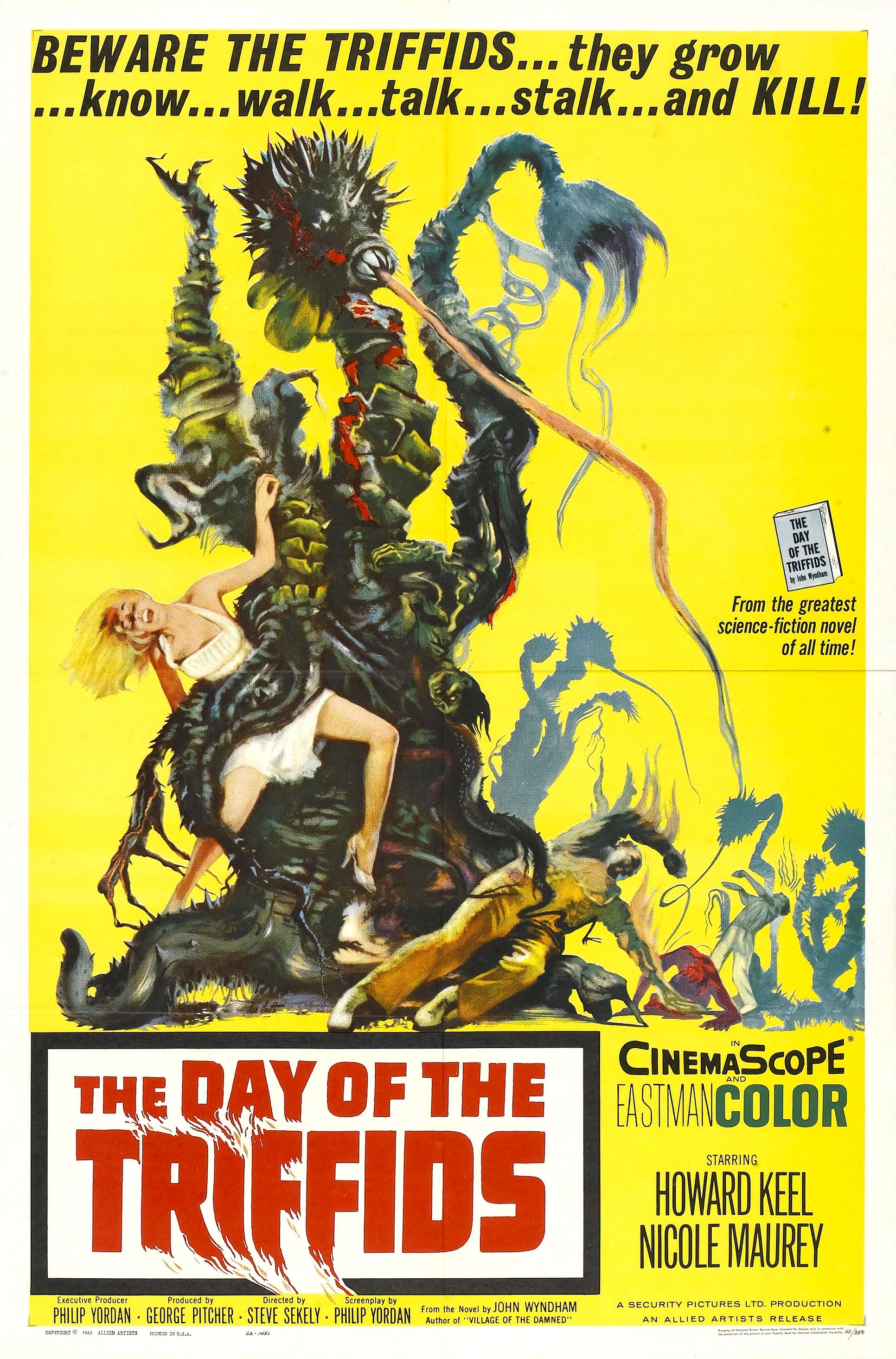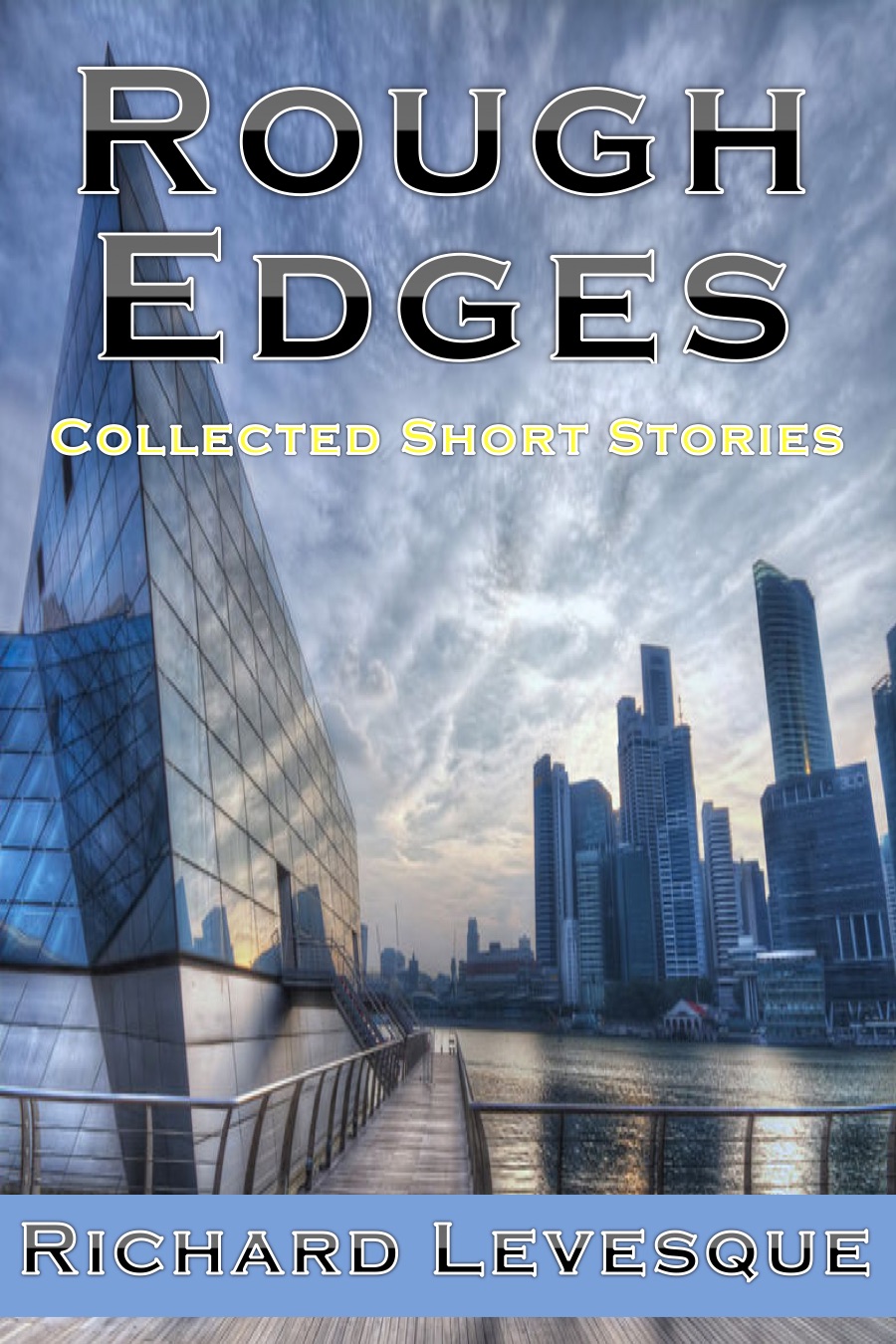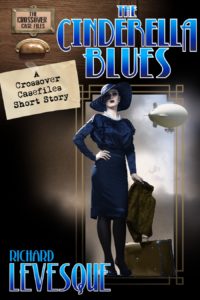My Favorite Ways to Destroy the World
UPDATE: The Girl at the End of the World has now been released and is available in ebook and paperback formats at Amazon.
Continuing with the end-of-the-world theme here in preparation for the upcoming release of my new book. I’ve settled on a title, by the way. It’s The Girl at the End of the World. I’ll be releasing a sample soon, but for now I’m thinking about other books and films that have taken me to the edge and let me peak over. There are a lot of books in this genre, and there seem to be a lot more coming out of late. Here are my top 5 picks:
 The Day of the Triffids (1952). John Wyndham’s novel grows out of Cold War paranoia, but it isn’t the Bomb that the Soviets have dropped. It’s triffids–carnivorous plants that can walk and hunt. When triffids are first discovered, they’re a curiosity and are carefully contained and studied. But then something goes wrong. A natural phenomenon causes most of the people around the world to go blind. Now we’ve got a problem. Wyndham paints a chilling picture as the narrator wakes up in a hospital bed, his condition having spared him from being exposed to the source of the blindness. Now he’s got to survive, doing what he can to help others and himself. But wait! The blindness of their keepers allows the triffids to break free of containment, and now they’re roaming the streets of London, picking off their blind prey and feasting on them. The novel follows the narrator and a small group of survivors–some sighted and some not–as they search for a refuge from the carnivorous plants that appear to be on the verge of becoming the dominant species. Other end-of-the-world books that follow a small band of survivors owe a lot to Triffids.
The Day of the Triffids (1952). John Wyndham’s novel grows out of Cold War paranoia, but it isn’t the Bomb that the Soviets have dropped. It’s triffids–carnivorous plants that can walk and hunt. When triffids are first discovered, they’re a curiosity and are carefully contained and studied. But then something goes wrong. A natural phenomenon causes most of the people around the world to go blind. Now we’ve got a problem. Wyndham paints a chilling picture as the narrator wakes up in a hospital bed, his condition having spared him from being exposed to the source of the blindness. Now he’s got to survive, doing what he can to help others and himself. But wait! The blindness of their keepers allows the triffids to break free of containment, and now they’re roaming the streets of London, picking off their blind prey and feasting on them. The novel follows the narrator and a small group of survivors–some sighted and some not–as they search for a refuge from the carnivorous plants that appear to be on the verge of becoming the dominant species. Other end-of-the-world books that follow a small band of survivors owe a lot to Triffids.
I Am Legend (1954). Richard Matheson’s novel is the source for three films, and possibly the whole zombie aesthetic as well. The novel’s narrator appears to be the only survivor of a plague that has turned other humans into vampire-like creatures whom he hunts and kills by day while they lay siege to his boarded-up house by night, urging him to come out and join their ranks. The book is short and flat-out creepy, weaving together the narrator’s despair with flashbacks that illustrate how things got so bad. The 1960s Vincent Price film, The Last Man on Earth, was based on this book as well as the Charlton Heston Omega Man and the more recent Will Smith vehicle. George Romero is said to have “borrowed” the image of the boarded-up house with creatures trying to get in to produce one of the iconic images associated with Night of the Living Dead, a motif that’s been echoing through the genre ever since.
No Blade of Grass (1956). John Christopher wrote a few books in which the world ended. This one is rather narrow in its focus, but the implications are big. Set in the UK, the novel follows a small group of people dealing with a fast-moving virus. This one doesn’t kill people though: it kills grass. All grass, including wheat. The resulting threat of famine causes widespread panic, and society falls apart. The characters have to make hard choices if they’re going to survive, and Christopher doesn’t pull any punches as he lets his characters’ fates play out. The thing I like most about this book is that focuses on such a simple thing–grass–and plays with the idea of what would happen to the world if that one simple thing were gone.
The Genocides (1965). Thomas Disch’s novel opens several years after an alien invasion has wiped out most of humanity. The aliens appear to be using Earth for agriculture, planting alien crops that wipe out Earth plants; furthermore, they are incinerating human cities and killing survivors. The novel follows a small group of survivors who have found a way to live underground, getting some nutrition from the alien plants. It’s a bleak book, but like the best works in this genre it forces readers to focus on our humanity and to question our primacy on this planet.
The Road (2006). Cormac McCarthy’s look at a post-nuke world seems a little late arriving on the scene–so many years after other post-nuke novels like Nevil Shute’s On the Beach (1957), Pat Frank’s Alas, Babylon (1959), or Philip K. Dick’s Dr. Bloodmoney, or How We Got Along after the Bomb (1965). Still, McCarthy’s book is one of the bleakest imaginable and, as with some of the examples above, it is relentless in its portrayal of the humanity of suffering, isolation, and absolute loss of hope. Even so, there is an element of hope, an element of survival. As long as the characters still breathe, as long as they can keep putting one foot in front of the other, they survive, and humanity with them.
There are a lot of also-rans, other books that do a great job of portraying loss and survival. These are just the ones that have appealed to me the most. And I haven’t even delved into movies that deal with the subject. I realize looking over this list that it’s a rather depressing set of books, but at the same time there’s a sense of hope and resilience that comes through despite the bleakness of the settings. The books are filled with characters who struggle to survive without any of the tools our modern lives provide, and it’s the details of those struggles, as well as the implications of the ways in which the world repeatedly ends, that makes these works compelling.
So those are my top 5 ways the world’s been (fictionally) destroyed. What are your favorite end-of-the-world books?
Alas Babylon books Charlton Heston Cormac McCarthy Day of the Triffids Dr. Bloodmoney End of the world George Romero I Am Legend John Christopher John Wyndham Nevil Shute Night of the Living Dead No Blade of Grass Omega Man On the Beach Pat Frank Philip K. Dick Post-Apocalypse Richard Matheson Science Fiction The Day of the Triffids The Genocides The Girl at the End of the World The Last Man on Earth The Road Thomas Disch Vampires Vincent Price Will Smith zombies






